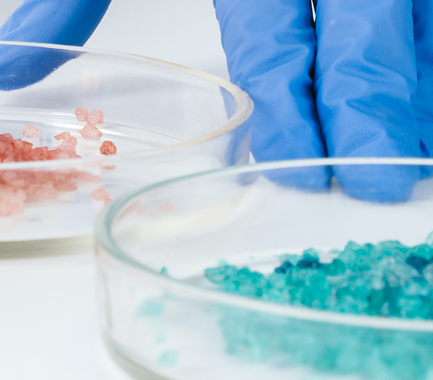Your contact
PENPET-Team - Hamburg

Christoph Meister
Sales
Tel. +49 (0) 40 - 675 7 99 30
sales@penpet.de
Get in touch with us.
Acetone
Acetone is an organic compound from the ketone group, which is of great importance for the chemical industry as a raw material for synthetic processes and as a solvent. It is mainly obtained from propene and benzene. In addition, processes for the dehydrogenation of isopropanol and the oxidation of propylene are also used for production.
Acetone is an important starting material for organic synthesis. It is used, among other things, in the production of methyl isobutyl ketone, mesityl oxide and diacetone alcohol. A quarter of the acetone produced worldwide is used to manufacture acrylic glass via the precursors acetone cyanohydrin and methyl methacrylate. In addition, the compound is an important solvent for oils, fats, resins, paints, varnishes and active pharmaceutical ingredients. In the household, acetone is found as a component of plastic glue and nail polish remover. The substance is also used industrially to degrease surfaces and photochemical conductor elements. In dentistry, acetone is used to clean tooth surfaces and root canals before treatment.
At PENPET you can reliably order the amount of acetone you need. We look forward to receiving your inquiry for an individual offer. The liquid can be delivered in drums, IBC containers of various sizes, as well as in bulk in tank containers.
CAS no. 67-64-1
EINECS no. 200-662-2
Molecular formula: C3H6O
Synonyms: Propanone, propan-2-one, 2-propanone, dimethyl ketone, acetonum, acetone, spiritus pyroaceticus, spirit of vinegar, spirit of brine
Areas of application: Raw material for the production of acrylic glass, starting material for chemical syntheses, solvent for lacquers, paints, resins, oils and active pharmaceutical ingredients, industrial cleaning agent, use as nail polish remover.
More information
As a ketone, acetone is one of the organic compounds with a non-terminal carbonyl group. Since its molecules consist of only two methyl groups next to this functional group, acetone is the simplest substance from the ketone class. This structure is expressed in the alternative names propan-2-one and dimethyl ketone. The strong electrical polarity of the compound allows it to be used as a polar solvent and to form complex compounds with cations.
Under normal conditions, acetone exists as a low-viscosity, volatile liquid with low electrical conductivity. The compound changes to the gaseous state at temperatures above 56 °C. Its melting point is -95 °C. The substance has a slightly sweet, characteristic smell.
Due to its electric dipole moment, acetone is soluble in water in any mixing ratio and can also be mixed with other solvents such as diethyl ether, benzene, ethanol, methanol and chloroform. Azeotropic mixtures are formed with a number of compounds such as methanol, carbon tetrachloride, chloroform, cyclohexane, pentane, hexane and heptane. These have a common boiling point and can no longer be separated from one another by simple distillation.
When stored as directed, acetone is chemically stable. Strong heating of the substance leads to thermal decomposition. Acetone is also combustible and very flammable. The vapors from the combination with the ambient air can form explosive air-vapor mixtures that can spread unnoticed on the ground. Particularly when handling open containers of the substance, care must therefore be taken to maintain a sufficient distance from ignition sources such as electrostatic charges, sparks, open flames and hot surfaces. The combustion and thermal decomposition of acetone produces irritating and noxious gases.
Acetone should be handled with care. It reacts violently with numerous substances such as bromine, sodium, fluorine, nitric acid, chromyl chloride, chromic sulfuric acid, chromium trioxide, ethanolamine, halogen compounds, alkali metals, alkali hydroxides and generally strong reducing agents and strong oxidizing agents. Acetone reacts with hydrogen peroxide to form acetone peroxide, which tends to explode. In a basic environment, mixtures of the compound with chloroform also react with the risk of explosion. Explosive reactions are also possible on contact with bromine trifluoride, difluorine dioxide, isoprene, nitromethane, nitrating acid, nitrosyl perchlorate, nitrosyl chloride and peroxomonosulphuric acid. When storing and processing acetone, it should be noted that the compound attacks plastics such as polyvinyl chloride (PVC), polyacrylate, polyvinyl acetate and polymethacrylate.
Acetone is a hazardous substance that is hazardous to the skin and eyes. The compound irritates and degreases the skin, with frequent contact inflammation can occur. In addition to thorough cleaning of the affected parts of the body, the use of a moisturizing skin ointment is recommended. In the eye, the substance can cause temporary redness and pain, conjunctival edema and corneal damage. After contact, the affected eye should be gently rinsed with water.
Inhalation of vapors from the liquid will cause dry mouth and respiratory irritation, headaches and fatigue. Ingesting acetone also causes internal swelling. After ingestion of larger amounts, consider performing gastric lavage. If the compound is absorbed into the metabolism, it can cause feelings of weakness, nausea and vomiting, as well as central nervous system disorders such as drowsiness, intoxication and unconsciousness. Cardiac arrhythmias and organ damage to the liver and kidneys are possible.
Acetone is considered to be slightly hazardous to water. Avoid penetrating the compound into the environment. The escape of larger quantities into the ground, the sewage system or open waters must be reported to the responsible authorities.
